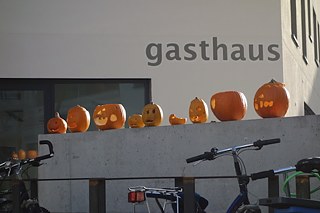Housing Cooperatives
Community instead of Property
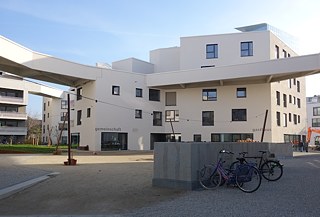
Germany is booming. Rents are rising and prices for residential space are increasing rapidly in dynamic urban centres such as Berlin, Hamburg, Stuttgart and Munich. Fewer and fewer people who work in these cities can afford to live there. But there is an alternative that guarantees both low rents and life estate: joining a housing cooperative. Germany’s most radical housing cooperative, wagnisART in Munich, has been honoured with the 2016 German Urban Construction Prize (Deutscher Städtebaupreis).
Even from far off, the windows, irregularly distributed along the facade, strike the visitor. If one goes from the street to the open space between the five buildings, one feels as if one is in another world.
At the fourth storey, wide concrete bridges span from house to house like arms placed over the shoulders of dancers in a circle. They create a space for the community that conveys security while permitting framed views of the surroundings.
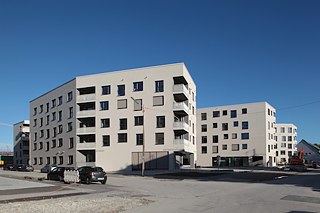
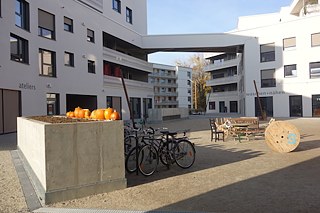
From the fourth storey upwards, one is above the roofs of the city and has a panorama view that includes the distant Alps to the south. If one strolls from bridge to bridge, one passes private loggias, an artist’s studio, or the broad “Champagne terrace” that lends itself to sunset community celebrations.
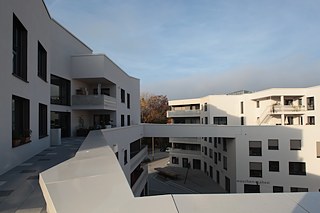
It is the fifth realised project by the Munich housing cooperative Wagnis, into which experience from the now-16 years since its founding have flowed. Despite this, wagnisART’s developmental process is unique each time.
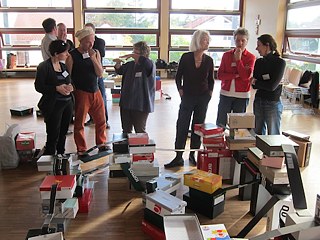
Here, the architects are more moderators than designers. In a workshop, cooperative members arranged the five volumes of the buildings with shoe-boxes in a circle and connected them with wooden slats as a symbol of community: the birth of the bridges, which despite all resistance and additional costs, remained core planning elements. Even the arrangement of the windows was left to the residents: each member could decide what wall he would later look upon from his flat.
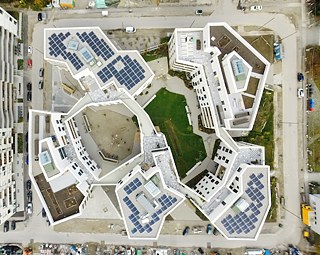
The sum and also the rents vary from one resident to another as only 30 percent of the flats are privately financed. The Bavarian state government subsidises 30 percent of the flats with income-based additional subsidisation (einkommensorientierte Zusatzförderung /EOF) and 40 percent according to the so called Munich Model.
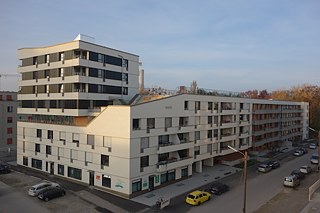
The Genossenschaftliche Immobilienagentur (i.e. cooperative real-estate agency /GIMA) in Munich now has 23 non-profit housing construction associations as members. Throughout Germany, since the Cooperative Act (Genossenschaftsgesetz) of 1889, cooperatives are experiencing a renaissance once again: over three million people are now members in one of over 2000 cooperative housing associations, or are already living in one of 2.3 million cooperative homes.
